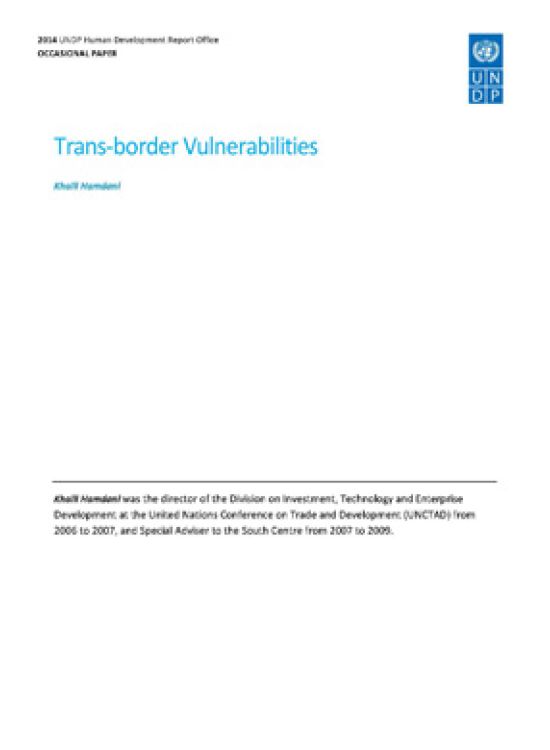Trans-border Vulnerabilities

Download Report by Language
Document
hdr2014hamdanipdf.pdf
(1.27 MB)
Citation
Khalil Hamdani. 2014. Trans-border Vulnerabilities. New York.
Trans-border Vulnerabilities
Posted on: January 01, 2014
Global connectivity is a powerful dynamic for human development. It is also a source of vulnerability. As people become more mobile and countries more interdependent, their interactions give rise to vulnerabilities that transcend borders. This is an increasing trend; it is not necessarily bad, but it is a complexity that warrants a global view. The policy responses to trans-border threats—protection, mitigation and adaptation—may entail collective actions that are not always forthcoming due to competing interests, opaque responsibilities and freeriders. When vulnerability is trans-border, it is more appropriately addressed within a global framework of principles, rules and institutions that enable the policy space for collective action. Such a framework is a global public good. The implication, from a human development perspective, is that public goods, and appropriate policies and institutions, can tilt the balance in favour of resilience. This is evident at the national level, but it is equally relevant at the global level. The efforts to contain pandemics and protectionism are examples; other measures are needed for a more sustainable world.

